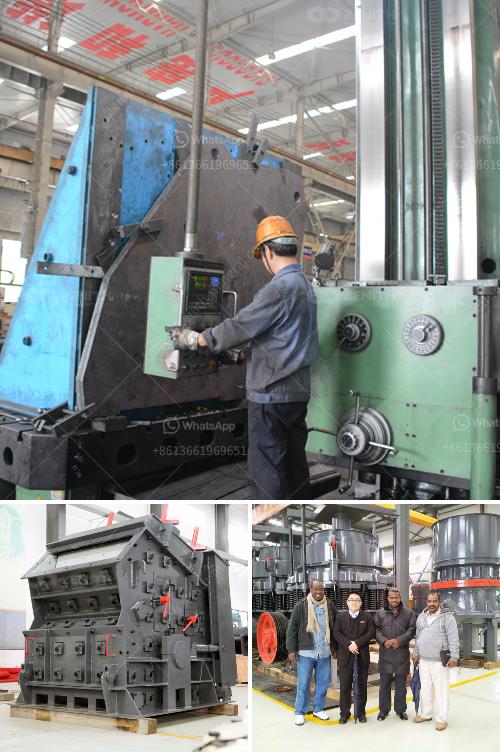To ensure the efficient operation and longevity of a stone crusher, regular checks and daily maintenance are crucial. Here’s a detailed guide on how to perform these tasks:
Daily Checks
-
Visual Inspection:
- Exterior: Check for any visible damage or wear on the machine's exterior. Look for cracks, dents, or any other signs of physical damage.
- Belts and Pulleys: Inspect the belts and pulleys for wear and tear. Ensure they are properly aligned and tensioned.
- Lubrication Points: Check all lubrication points to ensure they are adequately greased. This includes bearings, gears, and other moving parts.
-
Operational Checks:
- Startup: Listen for any unusual noises during startup. This could indicate issues with bearings, belts, or other components.
- Vibration: Monitor the machine for excessive vibration, which could indicate misalignment or worn parts.
- Output: Check the quality and size of the crushed material. Inconsistent output can signal wear in the crusher's components.
-
Safety Checks:
- Emergency Stops: Ensure all emergency stop buttons are functional.
- Guards and Shields: Verify that all safety guards and shields are in place and secure.
Daily Maintenance
-
Cleaning:
- Debris Removal: Clear any debris from around the machine. This includes removing any material build-up on the crusher itself.
- Dust Control: Use appropriate dust control measures to minimize dust accumulation, which can affect both the machine and the working environment.
-
Lubrication:
- Bearings: Apply grease to all bearings as per the manufacturer’s recommendations.
- Gears and Chains: Lubricate gears and chains to ensure smooth operation.
-
Component Checks:
- Wear Parts: Inspect wear parts such as jaw plates, cone liners, and impact hammers. Replace them if they show signs of significant wear.
- Hydraulic System: Check the hydraulic system for leaks and ensure the fluid levels are adequate.
-
Adjustments:
- Belt Tension: Adjust the tension of belts to prevent slippage and ensure efficient power transmission.
- Crusher Settings: Adjust the crusher settings to maintain the desired output size and quality.
Weekly and Monthly Maintenance
In addition to daily checks and maintenance, it’s important to perform more thorough inspections and maintenance on a weekly and monthly basis:
-
Weekly Maintenance:
- Detailed Inspection: Perform a more detailed inspection of all components, including internal parts.
- Hydraulic System: Check and replace hydraulic filters if necessary.
- Electrical System: Inspect electrical connections and components for signs of wear or damage.
-
Monthly Maintenance:
- Oil Changes: Change the oil in the hydraulic system and other lubricated parts as per the manufacturer’s guidelines.
- Alignment Checks: Check the alignment of the crusher and its components to ensure they are within the manufacturer’s specifications.
- Structural Inspection: Inspect the structural integrity of the machine, including the frame and supports.
Record Keeping
Maintain a detailed log of all inspections, maintenance tasks, and any repairs performed. This helps in tracking the machine’s condition over time and planning for future maintenance.
By following these detailed steps for daily checks and maintenance, you can ensure the efficient operation and longevity of your stone crusher, minimizing downtime and maximizing productivity.


